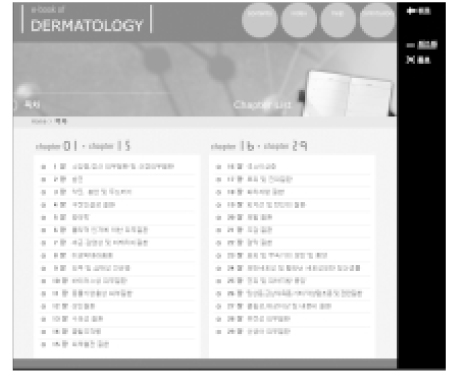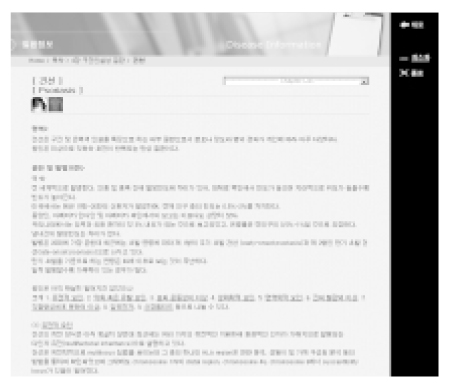J Korean Med Assoc.
2005 Jul;48(7):646-652. 10.5124/jkma.2005.48.7.646.
Introduction to the Electronic Textbook for Cutaneous Diseases
- Affiliations
-
- 1Department of Dermatology, Chungnam National University College of Medicine and Hospital, Korea. jhoon@cnu.ac.kr, bodaeng@hanmail.net
- KMID: 2183593
- DOI: http://doi.org/10.5124/jkma.2005.48.7.646
Abstract
- The diagnosis of cutaneous disorders depends mainly on the visual observation of skin lesions. To make accurate diagnoses, extensive experience with a number of different pathological states is required. An atlas that contains a wide range of pictures of cutaneous disorders is one way to gain indirect experience. However, the textbooks usually used for this purpose are inappropriate. With recent developments in computer science, which have made it possible to show many pictures relatively easily, a number of electronic textbooks have been published in medicine, especially in Western countries. However, most of these texts are simply modifications of earlier textbooks, and consist of text descriptions with a few added pictures, a practice that does not make the most of the benefits an electronic textbook can offer. In Korea, the Korean Dermatological Association as well as individual dermatologists have published several textbooks, including the 'Atlas of Skin Disease'. However, there has been no attempt to make an electronic textbook containing numerous images of cutaneous diseases with their descriptions. In 1986, we began to compile an electronic textbook for cutaneous diseases and completed it under the name the 'eBook of Dermatology', in 2004. It consists of 29 chapters, covering 1,116 diseases. Twenty-three dermatologists participated in collecting the 4,028 pictures, and writing the descriptions, which are given in the following form for each disorder: definition, cause and pathogenesis, clinical manifestations, pathologic features, diagnosis and differential diagnosis, and treatment.
Keyword
Figure
- Full Text Links
- Actions
-
Cited
- CITED
-
- Close
- Share
- Similar articles
-
- "Electronic Textbook of ""Abortion"" in Clinical Education of Obstetrics"
- Medical history in the Korean History Textbook
- A Design of Electronic Textbook Using the Multimedia Data Server
- The Creation of Dental Radiology Multimedia Electronic Textbook
- The Introduction and Management of Electronic Medical Record





